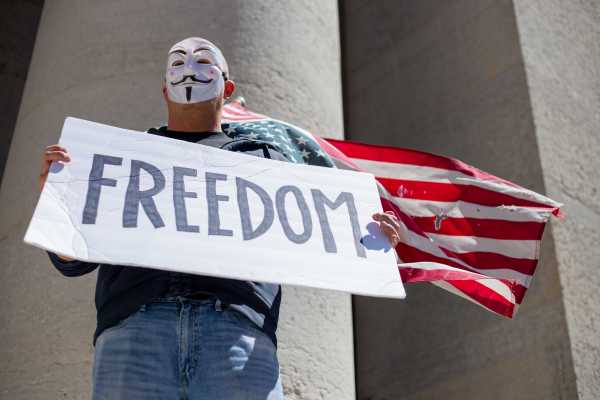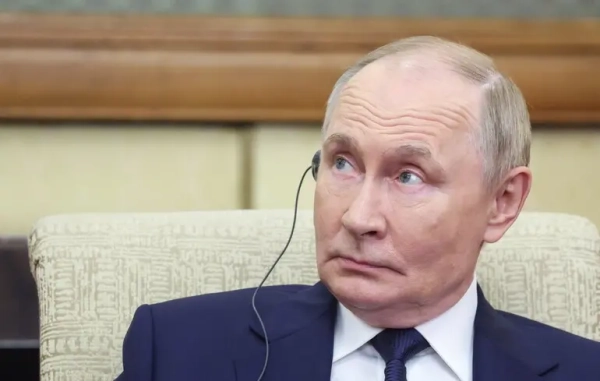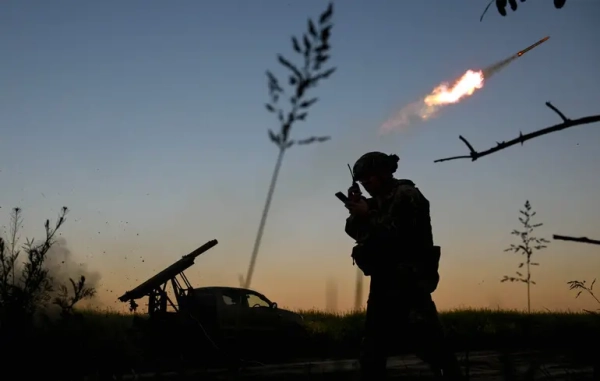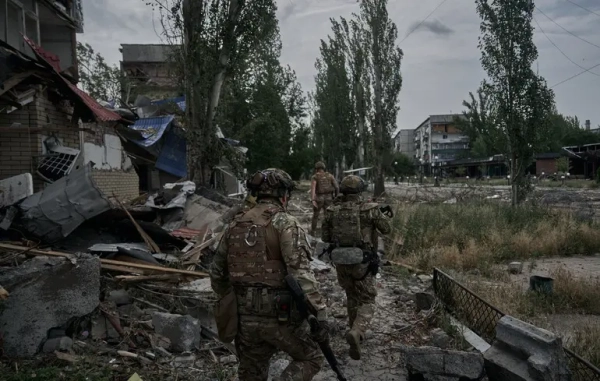
If you’ve watched Fox News recently, you might think there’s a small revolution afoot in Red America.
A series of anti-social-distancing rallies have popped up across the country — in Michigan, Wisconsin, Texas, and elsewhere. As my colleague Jane Coaston noted, it harks back to the Tea Party craze in 2009, “when well-funded right-leaning groups lit a fire under an already outraged Republican base and helped to ignite a political movement.”
Except it’s not really that at all.
The Tea Party was never representative of the country, but it was at least fairly representative of the Republican Party. That’s just not true of these anti-lockdown protests. Astonishingly, as Vox’s Laura McGann argued, Americans are mostly united in their willingness to social distance — Republicans included. The impression you get watching some of the coverage on Fox News, however, suggests that we’re witnessing a popular revolt against draconian public health measures.
But if this isn’t some spontaneous popular uprising, what the hell is it? Is it even a real protest? And who’s behind it?
To get some answers, I reached out to Theda Skocpol, a professor of government and sociology at Harvard and the co-author (with Vanessa Williamson) of the 2012 book The Tea Party and the Remaking of Republican Conservatism as well as a new book on the Tea Party and the anti-Trump resistance. We discussed how these anti-social-distancing rallies mirror the early Tea Party protests, why they’re fundamentally different, and why she thinks right-wing ideologues see this moment as “potentially dangerous for their vision of the American economy and people’s place in it.”
A lightly edited transcript of our conversation follows.
Sean Illing
Are these anti-quarantine protests a product of the same forces behind the Tea Party or are we witnessing something fundamentally different?
Theda Skocpol
Well, the Tea Party was a combination of top-down media cheerleaders and advocacy groups pushing ultra-free-market libertarian ideas and popular protesters who were genuinely angry about the Democrats and Barack Obama. They were especially animated by race and immigration and social benefits for people they did not believe were contributing to America.
In this case, I suspect we’ve got a similar combination of top-down influence from high-dollar organizations and some genuine energy at the grassroots level. But I also suspect this is mostly being pushed and promoted from above. And I want to be careful here, because I’m not saying there aren’t any grassroots people out there who are angry about the lockdowns, especially since the political geography of the United States means that conservatives tend to live in areas that haven’t been hit as hard as the metro areas.
But this is a narrowly targeted event, happening in a modest number of places with dozens to hundreds to maybe in the thousands range of people turning up, and we don’t have to be sleuths to realize that there are national orchestrators here.
Sean Illing
You’ve mentioned the “national orchestrators” behind this a couple times. Who are we talking about?
Theda Skocpol
There’s FreedomWorks, a right-wing advocacy group that also helped turn the famous CNBC television rant into dozens of rallies across the country in February of 2009 — that was the origins of the Tea Party. The people at FreedomWorks are egging this anti-lockdown protest on and providing encouragement and models for these events and helping to select cities.
Now, that doesn’t mean FreedomWorks or any one person is in control of all this. But groups like this provide email lists, help organize activists around the country, and facilitate these things as much as they can. And of course Trump himself is using his social media feeds in the same way, which is just an amazing resource if you want to coordinate and target protests. So that’s what I mean when I say a lot of this is driven from the top down.
(Author’s note: NBC news also reported that a family-run network of various pro-gun groups was behind several of these anti-quarantine rallies.)
Sean Illing
Just to be clear, the point here is that these protests are some combination of genuine activism and what’s often called “astroturfing,” which is basically corporations and special interests creating the illusion of popular support by organizing behind the scenes. But we can’t quite say that it’s just one or the other.
Theda Skocpol
That’s almost certainly true. What I don’t know, and what no one really knows, is what the actual thinking of the grassroots people is. I’m very doubtful that it’s purely economic frustration. I think it’s much more likely people who already have a commitment to Donald Trump himself and they see this as defending him. But a lot of this is just made-for-TV rallies designed to generate outsized coverage — and it works.
Sean Illing
Can we say, then, what these protests are really about?
Theda Skocpol
A lot depends on the point of view we take. For the elite conservative groups sponsoring this stuff behind the scenes, I think it’s driven by a firm belief that if Americans become used to trusting government and relying on social benefits from government, then that’s dangerous to the victory they think they have almost won in destroying the New Deal and the Great Society reforms in this country.
Sean Illing
What do you mean by that?
Theda Skocpol
I think they see this pandemic and the government response to it as a potentially dangerous moment for their vision of the American economy and people’s place in it. They don’t want people to see how helpful government can be, they don’t want them to change their minds about the role of government in society. So this is a dangerous moment for their ideological worldview.
Sean Illing
And what about the ordinary protester on the ground? Do you think it’s just a reflexive defense of Trump and nothing besides?
Theda Skocpol
It’s speculation on my part, but based on the previous interviewing and polling I’ve done with people who share this outlook, I wouldn’t be surprised if many of them really believed this whole pandemic has been overplayed. In fact, I have reports from some of the counties I’m studying around the country that many grassroots people on the right who live in communities not yet hit by this coronavirus think it’s completely overplayed.
A lot of people are getting their information from Fox News, which is really lying about what’s going on. And so plenty of them are probably thinking this is just a problem for urban people and people who travel to Europe or China and they just don’t see it as an immediate threat where they live. But they absolutely see it as a political threat to Trump, who has become a hugely important symbol for a lot of people. And so they hate the idea that his presidency could be annihilated by some overblown crisis.
Sean Illing
You mentioned Fox News as a key tool of amplification in all this. I’m curious how you think about the role of misinformation and propaganda, both in this protest and in the evolution of the Tea Party.
Theda Skocpol
Well, those are loaded terms, but look, anytime you have a dedicated national network that’s connected to other sources of information on the internet and radio that functions as an echo chamber for its audience and seals it off from arguments on the other side, then of course that’s going to define their worldview. The media infrastructure on the left is a much, much milder version of this but it’s not equivalent. There’s a real difference.
I think Fox is genuinely a propaganda network and it’s very dangerous. But probably more dangerous here is the president of the United States. Trump is using his authority and the emotional connection he has with his supporters to urge them to risk their own lives. That’s evil, actually. I think as a social scientist I’m perfectly comfortable saying that.
Sean Illing
Even if we grant that these anti-quarantine protests are largely manufactured, do you think they could actually morph into something significant if they get enough coverage?
Theda Skocpol
I don’t think it’s going to morph it into anything on the scale of the anti-Trump resistance or the Tea Party back in 2010. I just don’t see the conditions for that. This is a “live free or die” movement and it’s just not going to catch on with as large a proportion of people. But I expect it to bubble on, because I think Donald Trump will continue to encourage his hardcore supporters to show their support for him publicly until such time as he can hold big rallies again.
And this is partially designed to set the governors up, the Democratic governors in particular, as people who don’t believe in the economic growth. I guess they think that’s going to be a popular message. I don’t think it is. I really think that there’s a misreading on the right of the nature of the crisis we’re in and a downplaying of the fears that most families have right now.
Most Americans can look around and see what’s happening. They see people dying and suffering. They know this is a real problem. So no, I don’t think this is going to be the next Tea Party.
Correction: An earlier version of this piece named the Heritage Foundation as one of the groups behind the protests. However, the Heritage Foundation has denied any involvement with the protests. We regret the error.
Support Vox’s explanatory journalism
Every day at Vox, we aim to answer your most important questions and provide you, and our audience around the world, with information that has the power to save lives. Our mission has never been more vital than it is in this moment: to empower you through understanding. Vox’s work is reaching more people than ever, but our distinctive brand of explanatory journalism takes resources — particularly during a pandemic and an economic downturn. Your financial contribution will not constitute a donation, but it will enable our staff to continue to offer free articles, videos, and podcasts at the quality and volume that this moment requires. Please consider making a contribution to Vox today.
Sourse: vox.com






